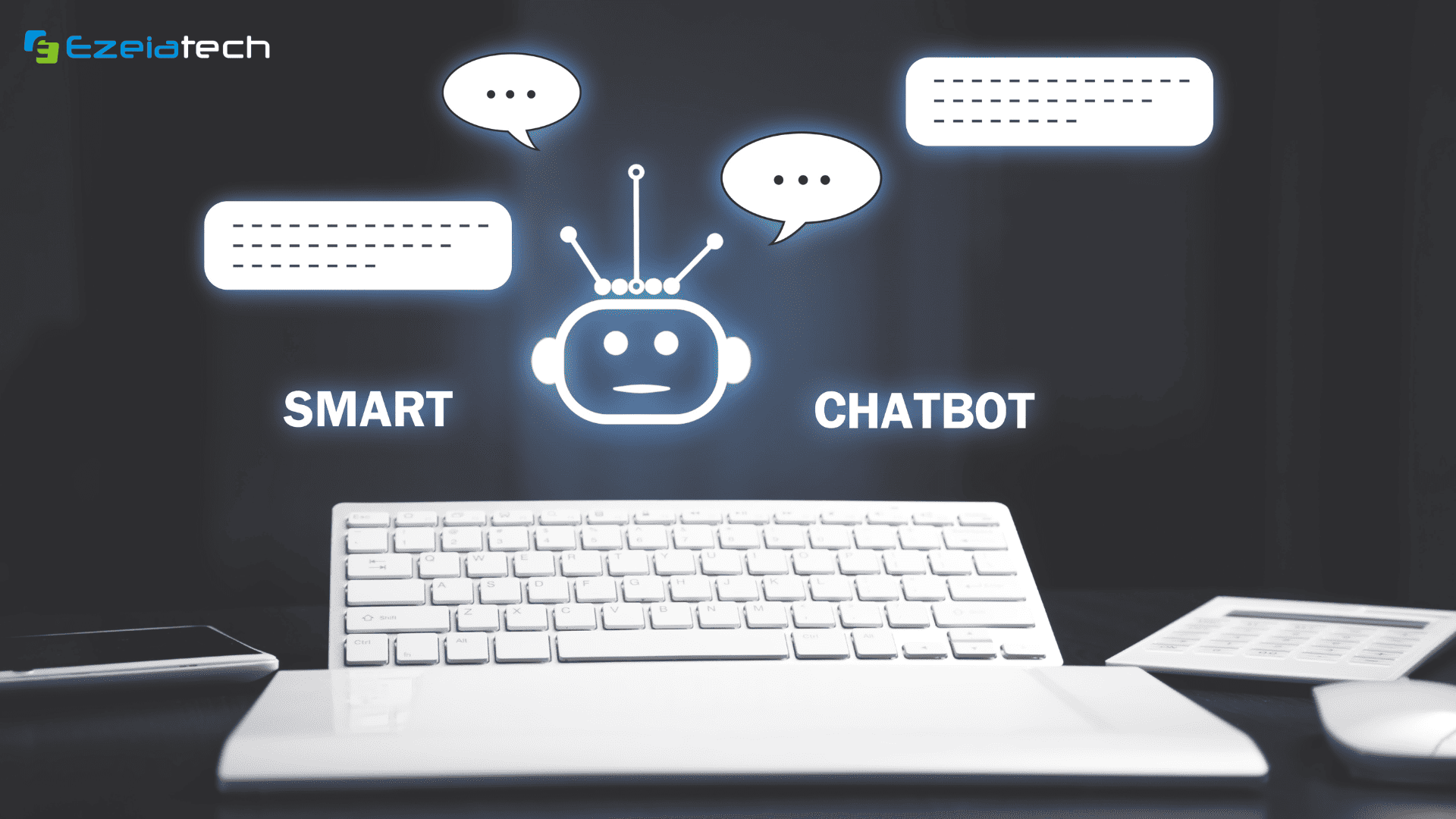Business interactions have been transformed by chatbot Development, altering the customer-business dynamic. HubSpot reports that nearly half of consumers are willing to make purchases via chatbots, prompting a surge in organizations incorporating these virtual agents onto their websites.
However, the path to widespread chatbot adoption is fraught with challenges. While there are numerous development tools and practices available, many firms overlook critical aspects during chatbot development, necessitating careful preparation.
Here are 8 biggest challenges that companies face during chatbot development and ways to effectively tackle them.
1) Context in Chatbots
The integration of context and meaningful responses is pivotal for the advancement of any chatbot, as conversations lacking context tend to be vague. Companies face challenges in constructing, developing, and sustaining bot memory to deliver personalized responses.
This is where AI technologies such as Machine Learning or NLP (Natural Language Processing) play a crucial role, addressing the challenge of comprehending conversational depth to a certain extent. NLP comprehends structured databases and datasets, converting them into a language understandable to users.
However, human interactions are not strictly sequential. Consequently, intelligent slot filling, which records the preferences of regular users, serves as an alternative to effectively maintaining bot memory. This ensures that virtual agents engage in personalized conversations rather than following predefined sequences.
2) Context Retention Across Sessions
Maintaining context within a single conversation is just one aspect; extending that context across various sessions or platforms presents an additional challenge. Users might initiate a conversation on a website and resume it later via a mobile app, making seamless continuity of context between these sessions a complex problem.
For example, if a user adds items to a shopping cart on a website and subsequently interacts with the chatbot through a mobile app, it’s crucial for the chatbot to recognize and continue the shopping context.
To address this challenge, develop a robust user profiling system capable of securely storing and retrieving user context across sessions. Utilize unique user identifiers and authentication mechanisms to seamlessly link conversations. Implement cloud-based storage for persistent data accessible from different platforms. This approach ensures a consistent and personalized user experience across various interaction channels.
3) Chatbot Testing
Testing chatbots poses significant challenges, primarily due to their continuous evolution driven by upgrades in natural language models. As a result, ensuring the accuracy of chatbots through testing becomes vital. The testing approach depends on the desired experimentation method.
One method involves automated testing, utilizing platforms such as Zypnos, TestyourBot, Bot Testing, and Dimon. These platforms provide detailed reports and allow the coding of test scripts, facilitating testing across all scenarios.
The other method involves testing conversational logic manually, with a closed group of testers acting as users to evaluate the bot for unexpected scenarios. Although this method can be time-consuming and only partially accurate, it offers benefits by validating the logic against human conversations.
Combining both methods emerges as the best alternative to ensure optimal user service, leveraging the strengths of each approach. By integrating automated testing for comprehensive coverage and manual testing for validation against real-world interactions, chatbots can deliver enhanced performance and reliability.
4) Viability of Data
Simply having abundant data, intelligent slot filling, or a technologically advanced chatbot is futile if it fails to deliver your organization’s unique selling proposition (USP). A chatbot must not only possess meaningful data but also be capable of conveying your brand identity to your target audience effectively. To assess the viability of your virtual agents, consider asking yourself the following questions:
- Are your virtual agents effectively reaching the intended audience?
- Do they contribute uniquely to achieving business goals?
- How do they differentiate themselves from other chatbots in the market?
5) Personalization and User Individuality
Each user possesses unique preferences, communication styles, and expectations, presenting a challenge in chatbot development: crafting a system capable of accurately understanding and adjusting to these individual characteristics. This entails discerning language nuances, customizing responses based on past interactions, and grasping user preferences.
For instance, one user might prefer succinct answers, while another might prefer more detailed explanations for the same query. The challenge lies in enabling the chatbot to adapt its responses to accommodate each user’s individuality.
To overcome this challenge, robust user profiling mechanisms must be established. Machine learning algorithms can be employed to analyze user behavior, language nuances, and preferences, resulting in detailed user profiles. Dynamic content generation techniques, guided by these profiles, can tailor responses to match each user’s unique communication style. Continuous learning from user interactions ensures that the chatbot evolves to meet changing preferences over time.
6) Integration with Third-Party Services
As expectations for chatbots expand, they’re increasingly tasked with performing complex functions such as making reservations, accessing external databases, or interacting with various services. The challenge lies in smoothly integrating the chatbot with a wide range of third-party APIs and services, each with its unique data structures, authentication methods, and error-handling processes. Maintaining a seamless flow of information and actions between the chatbot and these services without sacrificing user experience is a daunting task.
For instance, integrating a chatbot with a hotel booking service requires managing availability checks, booking processes, and confirmation procedures, which can vary across different providers.
To achieve seamless integration with third-party services, developers should adhere to industry-standard API practices. Establishing modular and flexible integration points simplifies connections with diverse external services. Middleware or integration platforms can normalize data formats and authentication methods, streamlining interactions between the chatbot and external APIs. Regular updates to integration components ensure ongoing compatibility with changes in third-party services.
7) Limited User Attention
Users have a limited attention span for their queries and demand quick responses. Developing chatbots that can engage users until the end poses a significant challenge for firms.
Conversational UI plays a crucial role in fostering human-like interactions and enhancing customer experiences. It aims to make interactions more social rather than purely technological. As a result, conversations should feel natural, creative, and emotionally engaging for a chatbot to succeed. However, there are instances where a machine may not provide the same level of empathy as a human. In such cases, human intervention becomes necessary to address the user’s needs effectively.
8) Dealing with Sensitive Information
Chatbots frequently deal with sensitive user data, including personal information, financial details, or health-related data. Safeguarding this data and ensuring compliance with privacy regulations presents a substantial challenge. Developers must establish robust encryption, authentication, and authorization protocols to safeguard user information. This challenge is compounded when integrating with third-party services that may have varying data protection standards.
To address these concerns, employ powerful encryption algorithms to secure sensitive data during transmission and storage. Implement secure authentication and authorization mechanisms to regulate access to user information. Strictly adhere to data protection regulations and conduct regular security audits to uphold compliance and maintain data integrity.
Begin Your Chatbot Development Journey
While incorporating a chatbot into your digital strategy may appear promising, crafting one that aligns with the expectations of your organization and users poses a significant challenge. It’s crucial to develop an effective and well-planned strategy before introducing the chatbot to your audience. When executed successfully, chatbots can serve as the primary point of contact for your business, enhancing overall productivity by meeting customer expectations on demand.
Thank you for reading. For continued insights and in-depth discussions, please follow our blogs at Ezeiatech.







